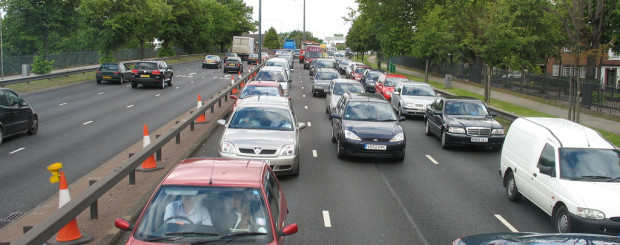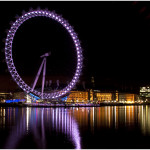Driving in London Explained Simply for Expats
Driving in the UK, and in London in particular, can fill expats with trepidation. After all, it’s likely that you’re going to be driving on the ‘wrong’ side of the road for a start, not to mention sitting on the wrong side of the car (not applicable if you come from such countries as Australia or Singapore, where you already drive on the left).
But it’s not only road positioning that can seem different. There are probably some different driving rules as well. So with that in mind, here is the Expat Guide to Driving in London.
Types of roads
Okay, so in the whole of the UK, including London, roads are classified as A Roads, B Roads and motorways.
- A motorway is a multi-laned road (anything from two to five lanes) that provides a direct route from one place to another. The only exception to this is the infamous M25, which encircles the Greater London Area. The speed limit on motorways is generally 70mph, although in some areas there are variable speed limits of less than this. When driving, you keep to the left hand lane unless overtaking. Once you’ve passed the vehicle you wish to, move back to the left hand lane when possible.
- An A road is a major route of either one or two lanes. On a single lane A road, the speed limit, unless specified, is 60mph. However, when going through built up areas, or areas where there’s been a significant amount of accidents, it’s likely to be less than this – down to 30, or even 20mph. On a dual carriageway A road, the speed limit is 70mph.
- A B road is a more minor route. Speed limits vary on these, anything from 20mph to 60mph. Signs on the side of the road will tell you what the speed limit is.
NB – the speed limits given on this page apply for regular cars. Vans, lorries, buses, minibuses and HGVs have different (lower) speed restrictions)
Top Tip! Anywhere there is regular street lighting on a road (other than a motorway or dual carriageway), you can safely assume that the speed limit is 30mph or less.
The Highway Code provides full details of all the driving laws, road types, speed restrictions etc. for driving in all areas of the UK.
Driving in London is an experience. There’s lots of traffic, the directional road signs (if we’re brutally honest) are not that great, and if you’re unfamiliar with the area it can be a challenge to follow them. But that’s all part of the fun of driving in another country…
Traffic Lights
Unlike in various other countries, you can only go through a traffic light when it’s on green. Red means stop, and amber also means stop.
You also need to be aware of painted signs on the road that tell you which lane is for going straight on, turning left and turning right. In a queue of traffic it can be easy to miss these, and end up in the wrong lane. This can make for having to push your way across, or going in the wrong direction altogether.
Roundabouts
Another way of controlling traffic flow at junctions is the humble roundabout. If you’re not familiar with these, they can seem like a bit of a challenge at first. However, all you need to remember is to give way to the right (the traffic already on the roundabout), and to get in the correct lane. You’ll get the hang of it in no time…
Congestion Charge
One thing to be aware of is that if you intend to drive in London, you’re going to be charged for the privilege.
Yes, Monday to Friday, from 07:00hrs to 18:00hrs, you get to pay £11.50 per day to drive there. This Congestion Charge was introduced as an attempt to cut down on congestion and emissions in the capital. The zone is marked by a big red ‘C’ in the road and on road signs.
Parking in London
Hmmm, now there’s a contentious issue. Parking, when you can find it, can be extremely expensive. Many of the large car parks are owned by the company NPC, who certainly know how to make their money. Other options are to park by the side of the road where possible. However, you’ll find that many areas are resident parking only, for which you need a permit. Areas where anyone can park are usually charged, and these costs can be astronomically high.
Parking in London also means that you need to be aware of what roadside markings need. Never, ever, under any circumstances park or stop on a Red Route (denoted by a single or double red line at the side of the road). Stopping is not permitted in these zones.
Yellow lines will also be found. Double yellow lines mean no parking or stopping at any time. Single yellow lines mean no parking or stopping at certain times (these will be displayed on signs at the side of the road). More details about these restrictions can be found in the Highway Code.
Fuel
One last word on filling your car with fuel. When you go to a petrol station in the UK, you’ll generally see three different types of fuel. Unleaded, Premium Unleaded and Diesel.
Depending on where you hail from, you’ll likely be shocked at the price of fuel in the UK. You can cut costs considerably by searching for the cheapest fuel in your area. Supermarkets such as Sainsburys, Tesco and Morrisons offer deals when you shop with them, providing discounts of up to 20pence per litre of fuel in some case.








